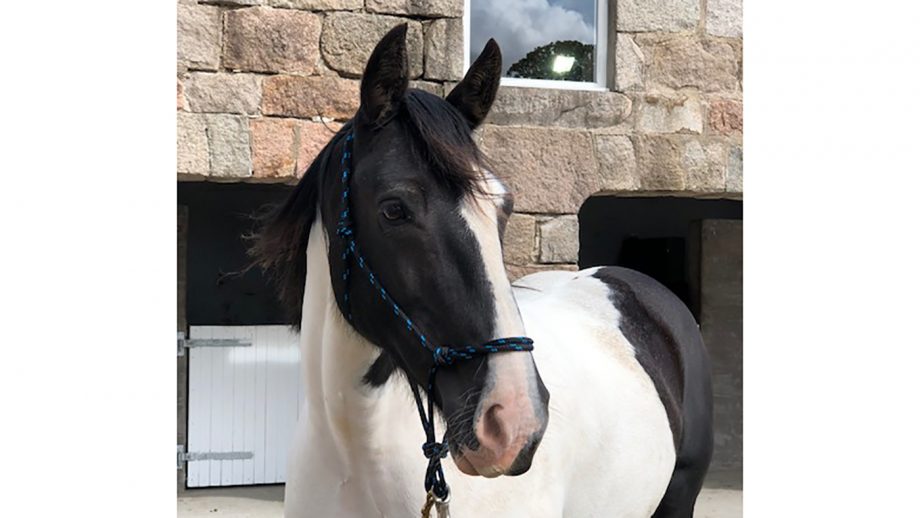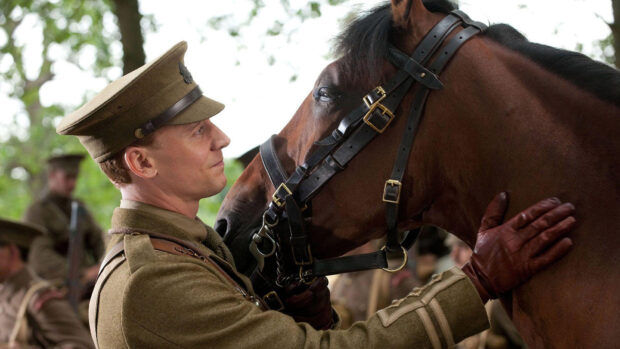Every day, our horses work for us tirelessly, teaching riding skills, providing therapy and promoting equestrianism. In this series, we meet some of the horses and ponies who are Britain’s unsung heroes, such as Neils and Pico who work at Beamish Museum in County Durham
Beamish Museum is a large open air museum telling the story of life in the north east of England in the 1820s, 1900s, 1940s and 1950s on their 350-acre site. Visitors can take a tram to the Edwardian town, take a trip down a 1900s coal mine or see what life was like on the Home Front during the Second World War at the farm.
To present a true picture of the times, the site has around 20 horses and ponies. As well as adding appropriate historical colour, the horses do real work such as carting hay from the fields, pulling loads of coal and logs to the 1820s steam railway and ploughing.
Chris Thompson has been working at Beamish for 22 years and is now keeper of horses and head of land management.
“I grew up with horses,” says Chris. “My grandad used to have a fruit and veg round with a horse and cart and I had a pony when I was three. I mostly grew up with harness horses. Getting involved with Beamish was a bit of luck, really. I was working in a non-equestrian job in my early 20s and I wrote a speculative letter to the museum asking for work — I was offered a job as a stable hand, and now, over two decades later, I’m ultimately responsible for all the livestock, including horses, cattle, pigs and poultry, as well as being responsible for the teams managing the land, gardens and woodland.

Pico on the nearside with Neils on the far side
“We have horses in each of our areas at the museum, which includes a colliery and a railway, although in the 1940s area there are a couple of tractors as well. We used to have more heavy horses when I first started, now we have carriage horses, Shires, Clydesdales, Shetlands, a Fell pony, Cleveland Bay, Percherons, Irish cobs and two Gelderlanders. They’re all breeds you might have found in those places at those times. All our vehicles and harness are either original or historically accurate, and all the handlers have to dress appropriately too.
“The role of the museum is two-fold, partly to educate, and partly to keep alive some of these old skills. All our horses and ponies have to have very special temperaments to cope with the scale and diversity of what we’re asking of them. Our two 17hh Gelderlander geldings, Neils and Pico, are two of our stars. They came from Holland 18 years ago, and they’re now 24 and 22 respectively. They’re our longest-serving working horses.

Pico on the left with Neils on the right
“Gelderlanders can traditionally be quite highly strung, but once they trust you they’ll work their hearts out for you. Lively, boisterous horses aren’t always the best choice for the kind of work we do, which involves a lot of standing still, but these two have really grown into their roles, they’re forward-going but obedient. We couldn’t have horses who didn’t enjoy their jobs as they wouldn’t cope here, but in their prime these two would happily trot 20 to 25 miles a day and not even blink. They’ve got good hearts, lovely head carriage and great stamina. They’re nice-looking horses as well, they stand up well and a have a high, showy action, a bit like hackneys. They’re very versatile and will drive as a single, a pair, left side or right side, lead or wheel, and they’re broken to ride as well. They’ve pulled fire engines, sleighs, an ambulance and have even done dressage!

Pico on the nearside with Neils on the far side
“Our horses have to be used to being in close confinement with the public as they’re always on show. The museum welcomes up to 750,000 visitors a year, so our horses have to be sociable and friendly and enjoy the attention. We have everything from trams, steam traction engines and the steam train on site, and often members of the public and will just walk past and pat the horses suddenly. Horses can either cope with that or they can’t — you can’t teach that, you can only improve it if it’s there. We get all kinds of groups visiting, including young school children or people with special needs or in wheelchairs, and our horses have to be happy with it.
Continued below…

Britain’s unsung equine heroes: the 33-year-old riding school pony with no desire to retire
Every day, our horses work for us tirelessly, teaching riding skills, providing therapy and promoting equestrianism. In our new series,

Britain’s unsung equine heroes: Polly — ‘she helps people become proud of who they are again’
Every day, our horses work for us tirelessly, teaching riding skills, providing therapy and promoting equestrianism. In our new series,

Subscribe to Horse & Hound magazine today – and enjoy unlimited website access all year round
“Neils and Pico are real pros now, although Neils can get a bit hot under the collar sometimes! I’ve driven them in parades, and he’s not keen on having a band behind him — I can feel him grow to 19hh and shorten right up when the drum starts but he always trusts me when I reassure him that everything’s okay.
“Our horses generally don’t retire as such, they just have their workloads adjusted as they get older. Neils and Pico are still fit and active but mainly do demonstrations and pulling of the lighter vehicles now. Over the years, they’ve given pleasure to hundreds of thousands of people, and I hope they’ll continue to do so for a while longer. They’ll be a hard act to follow.”
For all the latest news analysis, competition reports, interviews, features and much more, don’t miss Horse & Hound magazine, on sale every Thursday




